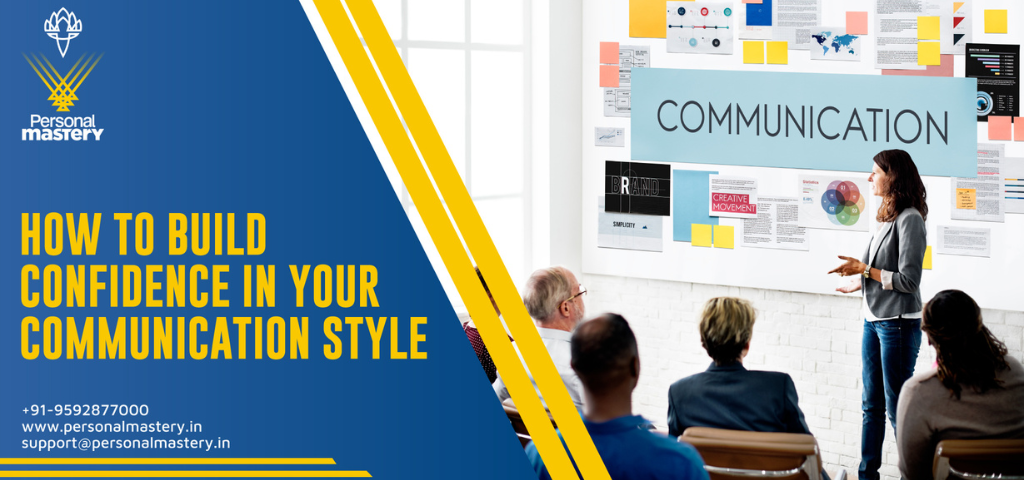
From Escalations to Appreciations: A Journey of Transformation Through Emotional Intelligence and Leadership
January 25, 2025
Reading Body Language: Key Nonverbal Cues for Interview Success
January 31, 2025Communication is the oil, the grease that links ideas, emotions, and people. However, for many of them, confidence in communicating seems still a hurdle to overcome. These days, communication has become not only a desirable skill but a mandatory one; thus, your style of communication should separate you out from the rest, whether it’s presenting ideas in a meeting, talking to a team, or generally networking. This blog will offer suggestions on how to build confident communication, with a case study, practically helpful ones, and experiences with Communication Skills Certification programs.
The Role of Confidence in Communication
Confidence is at the heart of successful communication. It touches not just on our words, but also how we present those words. Confident communicators present professionalism, engage audiences, and earn trust. The opposite, however, could be true for dispassionate speakers, leading towards misunderstandings, missed opportunities, and lack of good perception in a professional forum.
Why is Confidence Important?
- Boosts clarity and articulation
- Enhances empathic listening and response
- Builds rapport with others
- Encourages assertiveness in expressing ideas
Practical Tips to Build Confidence in Communication
1. Enroll in a Communication Skills Certification Course
Structured programs of training, for instance, the Communication Skills Certification, offer good opportunities to experience techniques for overcoming communication barriers. These programs give practical, confidence-building tools-from voice modulation to empathic listening-that prepare the participants for any situation in the professional sphere.
2. Practice empathic Listening
Empathic listening is a key component to confident communication. You shouldn’t start thinking of what to say next but rather give your full attention to the speaker. That way, this builds empathy and demonstrates professionalism-the two eras of establishing good relations.
3. Leverage Body Language
Non-verbal cues can say a lot. Keep an open body posture, use suitable hand gestures, and maintain eye contact. A strong stance coupled with a warm demeanor will give a nice shot of confidence and make a good first impression.
4. Develop a Personal Brand
A set brand is confidence. A Personal Branding Certification aims at helping an individual project a professional image both online and offline. This includes developing a credible presence on networking sites such as LinkedIn and ensuring consistency in your self-presentation.
5. Reframe Negative Thoughts
Negative self-perception is one of the biggest enemies of confidence. Instead of thinking, “I am not good at public speaking,” say, “I am into a communication skills course.” Such shifts in mindset can change your attitude towards communication.
6. Master Public Speaking
Joining a Public Speaking Mastery Course would be an asset and the key to delivering impressive speeches. Public speaking improves confidence in all other forms of verbal communication-from structuring your content to performing in front of an audience.
7. Focus on Advanced Business Etiquette
Having confidence in communication also implies an understanding of the tricky nature of professional behavior. Advanced business etiquette training will help the participants-the right approach while dealing with different kinds of relationships with people.
8. Embrace Feedback
Having confidence in communication also implies an understanding of the tricky nature of professional behavior. Advanced business etiquette training will help the participants-the right approach while dealing with different kinds of relationships with people.
Case Study: Ravi Kumar’s Path to Confident Communication
Ravi Kumar, a 32-year-old marketing professional from Mumbai, has periodic challenge communication problems. In spite of his professional knowledge, the consistency of reduced confidence allowed Ravi to stumble on many occasions during client presentations and team meetings. “I knew I had something important to say, but I did not have the courage to speak it at the right moment,” recalls Ravi.
With determination, he joined a communication skills certification program. The course began with the basics: building confidence and understanding the importance of professionalism. Through practical workshops, Ravi learned this:
- The power of empathic listening and empathy
- Techniques to reframe negative thoughts
- The impact of body language in communication
- Strategies for persuasive and assertive communication
So, Ravi enrolled himself in the Public-Speaking Mastery Course to sharpen his presentation skills. By the end of the course, he was not only a confident speaker, but he had also become a voice that was respected in his organization. “The training alone with feedback and real-world practice did a thorough makeover to my communication style. I now meet every interaction as an opportunity to express confidence and clarity,” he explains.
Today, Ravi has carved a niche for himself and enjoys career growth because of his effective communication style with commendable professionalism. His progress is a testimony to the life-altering effects that focused learning and practice can have.
Why Choose Professional Certification Courses?
Structured programs like the Professionalism Training Course and Public Speaking Course are designed to address specific communication challenges. Key benefits include:
- Globally Recognized Accreditation: Certifications endorsed by international bodies like IBPCT enhance your credibility worldwide.
- Comprehensive Curriculum: Covering foundational and advanced topics ensures a thorough understanding of communication skills.
- Expert Instruction: Learn from seasoned trainers with extensive industry experience.
- Lifelong Learning Opportunities: Access lifetime course materials, community support, and re-attendance options.
Advanced Strategies for Confident Communication
1. Conflict Resolution and Negotiation
Handling conflict and negotiation are part of confident communication. Workshops in Conflict Resolution and Negotiation Skills teach participants how to turn disagreements into opportunities for constructive action toward positive results.
2. Strategic Thinking in Communication
Strategic thinking allows you to sharpen your skills in delivering messages aligned with your objectives. The components of Leadership and Communication Training prepare individuals to engage in complex conversations clearly and purposefully.
3. Networking and Relationship Building
Networking is a crucial skill in today’s interconnected world. Relationship-building training through Networking and Building Relationships courses teaches professionals how to develop meaningful relationships that can last a lifetime.
Conclusion
Building confidence in one’s style of communication is a process of self-awareness, practice, and learning. Tools such as Communication Skills Certification, public speaking, and feedback allow one to change their manner of transferring oneself in personal and professional settings. Ravi Kumar’s journey itself stands as real proof of the power of structured learning and determination.
Start by developing that confidence: enroll in the program that will give you the knowledge and confidence to perform excellently. Do remember, however, that confidence is equally tied to authenticity, connecting with people, and leaving an impression.
FAQs:
- What are the key elements of effective communication?
The key elements include empathic listening, clarity in speech, understanding non-verbal cues, building rapport, and adaptability in different scenarios. Confidence plays a crucial role in delivering messages effectively. - How can I overcome nervousness while speaking in public?
Overcoming nervousness requires preparation, practice, and visualization. Techniques like breathing exercises, focusing on your audience, and engaging in public speaking training can help build confidence. - How do communication skills certification courses help in building confidence?
These courses provide structured training in areas like body language, professional speaking, and empathic listening. They also offer feedback and practical sessions, which help improve self-assurance and overall communication abilities. - Can improving business etiquette enhance communication skills?
Yes, understanding and practicing business etiquette improves professionalism and confidence in formal interactions, whether in meetings, networking events, or emails. - How long does it take to build confidence in communication?
The time required varies depending on an individual’s starting point, commitment, and the techniques they use. With regular practice and guidance through communication skills training, significant improvements can be seen within a few weeks to months.




